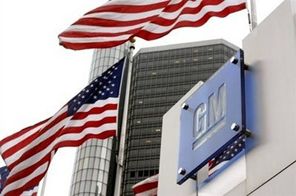US bankruptcy judge approves GM's restructuring
NEW YORK: A bankruptcy judge granted General Motors permission to sell its best assets to a new automaker in which the US government will hold a majority stake.
The decision paves the way for a speedy exit for GM, which sought bankruptcy protection on June 1 and has vowed to reinvent itself as a leaner, more profitable company once freed from its burdensome debts.
Once the world's largest corporation, the new GM will emerge as a significantly smaller automaker with few brands and a diminished global footprint.
Judge Robert Gerber said he had examined about 850 objections to the restructuring plan raised by GM stockholders and others, but ruled that he could not find them valid.
"Once again, the court is sensitive to their concerns, but cannot help them," he wrote.
"GM is hopelessly insolvent, and there is nothing for stockholders now. And if GM liquidates, there will not only be nothing for stockholders; there will be nothing for unsecured creditors."
Judge Gerber's decision can still be appealed by GM's creditors and it will take several days or possibly a few weeks for the asset sale to be completed.
That will nonetheless be well ahead of the 60 to 90 day timeframe predicted by President Barack Obama's administration, which spearheaded the process.
Chrysler, which is about a third of the size, spent 40 days in bankruptcy protection and even an appeal to the Supreme Court did not block its sale to a new company run by Italy's Fiat.
Like Chrysler, GM's weaker assets will be liquidated through the New York bankruptcy court, but the new GM will not be burdened by the lengthy process.
The cost of liquidating GM's remaining assets could be as high as 1.2 billion, chief executive officer Fritz Henderson testified Tuesday.
The US government will own 60.8 percent of the new company after having supported GM's operations with some 50 billion dollars in emergency loans.
Canada, which also provided billions in loans, will have an 11.7 percent stake and a United Auto Workers union retiree health care trust fund will hold 17.5 percent.
Creditors holding GM bonds will swap 27.1 billion dollars in debt for a 10-percent stake and warrants allowing them to buy an additional 15-percent stake.
Obama has said his administration has no intention of nationalizing General Motors over the long term and will not be participating in its day-to-day operations.
A senior member of Obama's automotive task force testified last week that the government could begin to sell its stake as early as 2010, once the new company is ready to launch a public stock offering.
GM was able to move through the process swiftly because it spent months preparing for the bankruptcy process and reaching agreements with its main union and most of its creditors.
While the new GM will have a significantly stronger balance sheet after having slashed its labor costs and shuttered factories to rid itself of excess capacity, it must still contend with the collapse in auto sales which pushed it into court protection.
US auto sales appear to have stabilized after falling to levels not seen in decades, but analysts warn it will likely be months before they recover from the current depressed rate.
Total US auto sales fell 28 percent in June, the first time sales have fallen by less than 30 percent since the market crashed in October of 2008, according to Autodata.
Sales for the first half of the year were down 35.1 percent at 4.8 million vehicles, according to Autodata.
GM's sales trailed the market, falling 34 percent in June and 41 percent for the first six months of the year.






